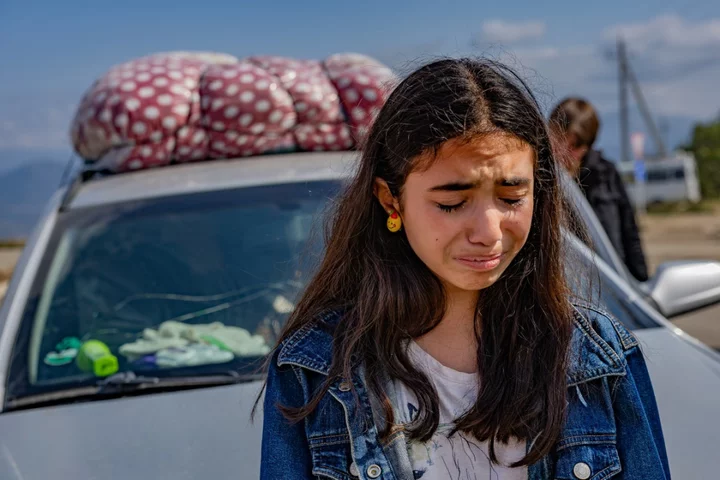
A People lost: The end of Nagorno Karabakh’s fight for independence
It is over and everything is lost. This is the refrain repeated by Armenian families as they take that final step across the border out of their home of Nagorno Karabakh. In just a handful of days more than 100,000 people, almost the entire Armenian population of the breakaway enclave, has fled fearing ethnic persecution at the hands of Azerbaijani forces. The world barely registered it. But this astonishing exodus has vanished a self-declared state that thousands have died fighting for and ended a decades-old chapter of history. Today, along that dusty mountain road to neighbouring Armenia, a few remaining people limp to safety after enduring days in transit. Among them is the Tsovinar family who appear bundled in a hatchback littered with bullet holes, with seven relatives crushed in the back. Hasratyan, 48, the mother, crumbles into tears as she tries to make sense of her last 48 hours. The thought she cannot banish is that from this moment forward, she will never again be able to visit the grave of her brother killed in a previous bout of fighting. “He is buried in our village which is now controlled by Azerbaijan. We can never go back,” the mother-of-three says, as her teenage girls sob quietly beside her. “We have lost our home, and our homeland.” “It is an erasing of a people. The world kept silent and handed us over”. She is interrupted by several ambulances racing in the opposite direction towards Nagorno Karabakh’s main city of Stepanakert, or Khankendi, as it is known by the Azerbaijani forces that now control the streets. Their job is to fetch the few remaining Karabakh Armenians who want to leave and have yet to make it out. “Those left are the poorest who have no cars, the disabled and elderly who can’t move easily,” a first responder calls at us through the window. “Then we’re told that’s it.” As the world focused on the United Nations General Assembly, the war in Ukraine and, in the UK, the felling of an iconic Sycamore tree, a decades old war has reignited here unnoticed. It ultimately heralded the end of Nagorno Karabakh, a breakaway Armenian region, that is internationally recognised as being part of Azerbaijan but for several decades has enjoyed de facto independence. It has triggered the largest movement of people in the South Caucasus since the collapse of the Soviet Union. Azerbaijan has vehemently denied instigating ethnic cleansing and has promised to protect Armenians as it works to re-integrate the enclave. But in the border town of Goris, surrounded by the chaotic arrival of hundreds of refugees, Armenia’s infrastructure minister says Yerevan was now struggling to work out what to do with tens of thousands of displaced and desperate people. “Simply put this is a modern ethnic cleansing that has been permitted through the guilty silence of the world,” minister Gnel Sanosyan tells the Independent, as four new busses of fleeing families arrive behind him. “This is a global shame, a shame for the world. We need the international community to step up and step up now.” The divisions in this part of the world have their roots in centuries-old conflict but the latest iterations of bitter bloodshed erupted during the collapse of the Soviet Union. The Karabakh Armenians, who are in the majority in the enclave, demanded the right to autonomy over the 4,400 square kilometre rolling mountainous region that has its own history and dialect. In the early 1990s they won a bloody war that uprooted Azerbaijanis, building a de facto state that wasn’t internationally unrecognised. That is until in 2020. Azerbaijan, backed by Turkey, launched a military offensive and took back swathes of territory in a six-week conflict that killed thousands of soldiers and civilians. Russia, which originally supported Armenia but in recent years has grown into a colder ally, brokered a fragile truce and deployed peacekeepers. But Moscow failed to stop Baku in December, enforcing a 10-month blockade on Nagorno-Karabakh, strangling food, fuel, electricity and water supplies. Then, the international community stood by as Azerbaijan launched a 24-hour military blitz that proved too much for Armenian separatist forces. Outgunned, outnumbered and weakened by the blockade, they agreed to lay down their weapons. For thirty years the Karabakh authorities had survived pressure from international powerhouses to give up statehood or at least downgrade their aspirations for Nagorno-Karabakh. For thirty years peace plans brokered by countries across the world were tabled and shelved. And then in a week all hope vanished and the self-declared government agreed to dissolve. Fearing further shelling and then violent reprisals, as news broke several Karabakh officials including former ministers and separatist commanders, had been arrested by Azerbaijani Security forces, people flooded over the border. At the political level there are discussions about “reintegration” and “peace” but with so few left in Narargno-Karabakh any process would now be futile. And so now, sleeping in tents on the floors of hotels, restaurants and sometimes the streets of border towns, shellshocked families, with a handful of belongings, are trying to piece their lives together. Among them is Vardan Tadevosyan, Nagorno Karabakh’s minister of health until the government was effectively dissolved on Thursday. He spent the night camping on the floor of a hotel, and carries only the clothes he is wearing. Exhausted he says he had “no idea what the future brings”. “For 25 years I have built a rehabilitation centre for people with physical disabilities I had to leave it all behind. You don’t know how many people are calling me for support,” he says as his phone ringed incessantly in the background throughout the interview. “We all left everything behind. I am very depressed,” he repeats, swallowing the sentence with a sigh. Next to him Artemis, 58 a kindergarten coordinator who has spent 30 years in Steparankert, says the real problems were going to start in the coming weeks when the refugees outstay their temporary accommodation. “The Azerbaijanis said they want to integrate Nagorno Karabakh but how do you blockade a people for 10 months and then launch a military operation and then ask them to integrate?” She asks, as she prepares for a new leg of the journey to the Armenian capital where she hopes to find shelter. “The blockade was part of the ethnic cleansing. This is the only way to get people to flee the land they love.” “There is no humanity left in the world.” Back in the central square of Goris, where families pick through piles of donated clothes and blankets and aid organisations hand out food, the loudest question is: what next? Armenian officials are busy registering families and sending them to shelters in different corners of the country. But there are unanswered queries about long-term accommodation, work and schooling. “I can’t really think about it, it hurts too much,” says Hasratyan’s eldest daughter Lilet, 16, trembling in the sunlight as the family starts the registration process. “All I can say to the world is please speak about this and think about us. “We are humans, people made of blood, like you and we need your help. “ Read More More than 70% of Nagorno-Karabakh's population flees as separatist government says it will dissolve ‘Centuries of history lost’: Armenians describe journey to safety after fall of Nagorno-Karabakh Nagorno-Karabakh: Tearful 16-year-old describes ‘bombing’ while she was in school Why this week's mass exodus from embattled Nagorno-Karabakh reflects decades of animosity
2023-10-01 00:25
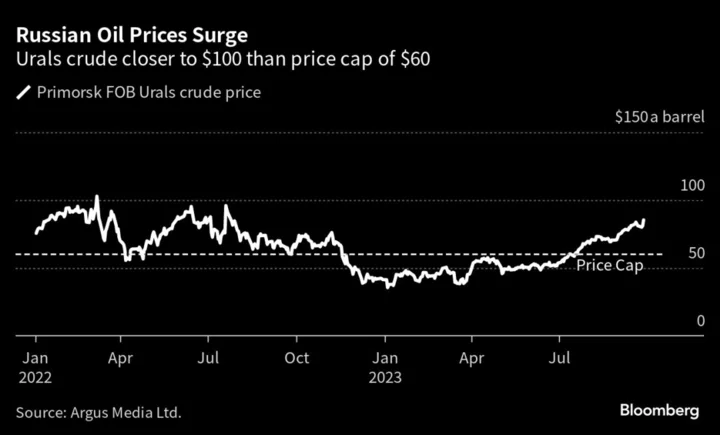
Ukraine Recap: Russia Launches Major Drone Attack From Crimea
Russia launched a large drone attack from Crimea overnight, sending about 40 loitering munitions, Ukraine’s air defence forces
2023-09-30 20:27
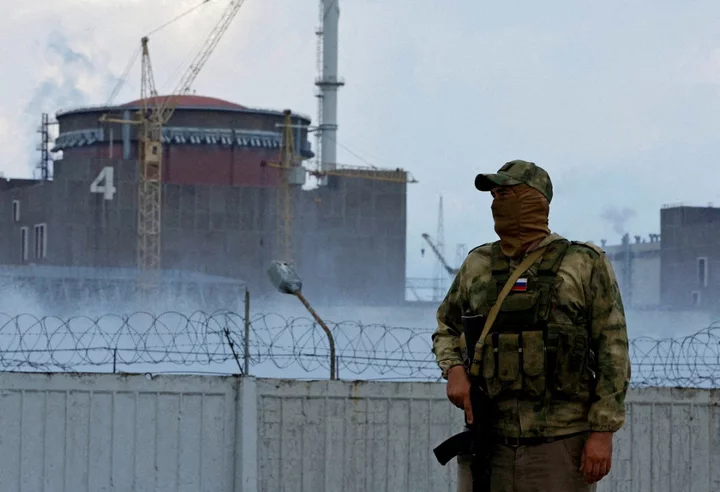
Ukraine-Russia war - live: Putin forces may have breached Romanian airspace during drone attacks
Nato member Romania said on Saturday morning Russia may have breached its airspace during attacks on southern Ukraine. The Kremlin has stepped up its attacks in Ukraine’s southern Odsea and Mykolaiv regions - near the border with Romanian - in recent days after exiting a deal allowing the safe passage of grain shipments via the Black Sea. “Following the detection of groups of drones heading towards Ukrainian territory near the Romanian border, residents in the Tulcea and Galati municipalities were alerted,” Romania’s defence ministry said in a statement. “The radar surveillance system ... indicated possible unauthorised entry into national airspace, with a signal detected on a route towards the municipality of Galati.” Earlier, Russian president Vladimir Putin ordered a former Wagner boss to take control of “volunteer units” and rejoin the frontline in Ukraine. Signalling the Kremlin’s intention to continue using the mercenaries following the death of Yevgeny Prigozhin, Putin told Andrei Troshev in a meeting late on Thursday that his task is to “deal with forming volunteer units that could perform various combat tasks, primarily in the zone of the special military operation.” Read More Ukraine ‘hits power substation’ in drone attacks on Russian border regions Putin’s shameless UN charm offensive - with stolen grain from Ukraine Russian figure skater Kamila Valieva's Olympic doping case will resume for two more days in November Ukraine's Zelenskyy taps celebrities for roles as special adviser and charity ambassador
2023-09-30 16:58
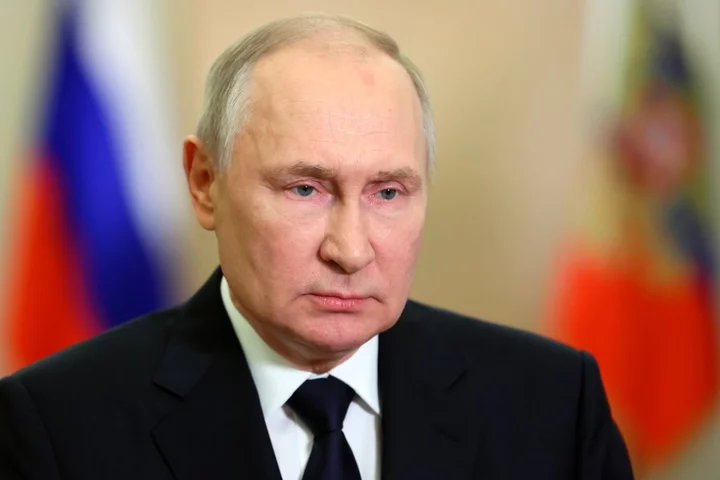
Putin marks anniversary of annexation of Ukrainian regions as drones attack overnight
Russian President Vladimir Putin on Saturday insisted that the residents of four Ukrainian regions that Moscow illegally annexed a year ago “made their choice — to be with their Fatherland.” In an address released in the early hours to mark the first anniversary of the annexation, Putin insisted that it was carried out “in full accordance with international norms.” He also claimed that residents of the Donetsk, Luhansk, Zaporizhzhia and Kherson regions had again expressed their desire to be part of Russia in local elections earlier this month, in which Russia’s Central Election Commission said that the country’s ruling party won the most votes. The West has denounced both the referendum votes carried out last year and the recent ballots as a sham. The votes were held as Russian authorities attempted to tighten their grip on territories Moscow illegally annexed a year ago and still does not fully control. A concert was held in Red Square on Friday to mark the anniversary, but Putin did not participate. Meanwhile, in Ukraine, air defenses shot down 30 out of 40 Iranian-made kamikaze drones aimed at the Odesa, Mykolaiv and Vinnytsia provinces overnight, the Ukrainian air force said Saturday. Vinnytsia regional Gov. Serhii Borzov said that air defenses shot down 20 drones over his central Ukrainian region, but that a “powerful fire” broke out in the town of Kalynivka when a drone struck an unspecified infrastructure facility. Romania’s Ministry of National Defense said on Saturday that a possible unauthorized entry into its national airspace occurred overnight amid the bombardment. It said the radar surveillance system of the Romanian Army detected “a possible unauthorized entry” into the national airspace of NATO member Romania, with a signal detected toward the city of Galati, which is close to the border with Ukraine. “At this moment, no objects have been identified that fell from the airspace onto the national territory,” the statement read, adding that NATO allies were informed in real time and that searches will continue through Saturday. Emergency authorities issued text message alerts overnight to residents living in the counties of Galati and Tulcea, after detecting what the defense ministry said was “groups of drones heading toward Ukrainian territory” near the border. In recent weeks, Romania has found drone fragments on its soil from the war next door at least three times as Russian forces carry out sustained attacks on Ukraine’s Danube ports. Russia’s Defense Ministry said Saturday that it had shot down nine Ukrainian rockets fired at its southern Belgorod region, which borders Ukraine. Local officials in Russia’s Bryansk region, also bordering Ukraine, reported disruptions to power supply following an unspecified attack on the town of Pogar. Drone strikes and shelling in the Russian border regions are a regular occurrence. ___ AP writers Stephen McGrath in Sighisoara, Romania, and Elise Morton in London contributed to this report. ___ Follow the AP’s coverage of the war at https://apnews.com/hub/russia-ukraine Read More Ukraine war’s heaviest fight rages in east - follow live Charity boss speaks out over ‘traumatic’ encounter with royal aide Pope creates 21 new cardinals who will help him to reform church and cement his legacy Slovakia election pits a pro-Russia former prime minister against a liberal pro-West newcomer UAE's president-designate for UN COP28 offers full-throated defense of nation hosting climate talks
2023-09-30 16:52
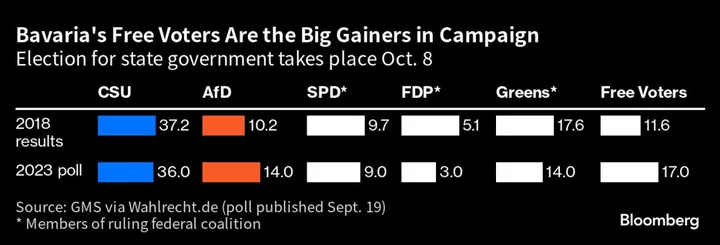
Nazi Barbs in Bavaria Revive Germany’s Struggles With Its Past
In downtown Munich, police cars blocked roads to a modern office building where security guards patrolled the halls
2023-09-30 16:22
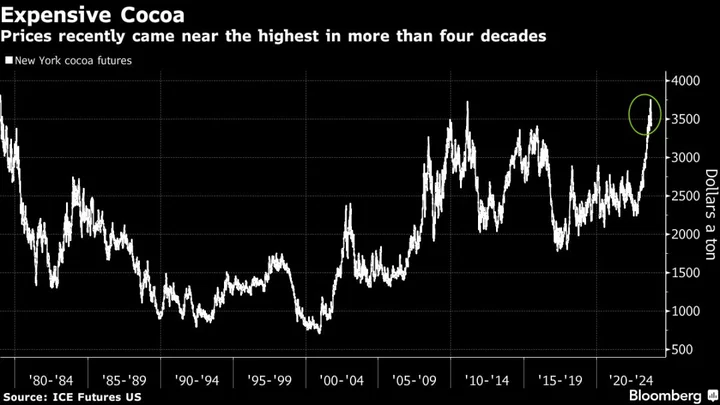
Chocolate Could Get Even Pricier If Africa’s Cocoa Crop Flops
Chocolate risks becoming even more expensive if West Africa’s new cocoa harvest ends in disappointment. Cocoa prices have
2023-09-30 15:21
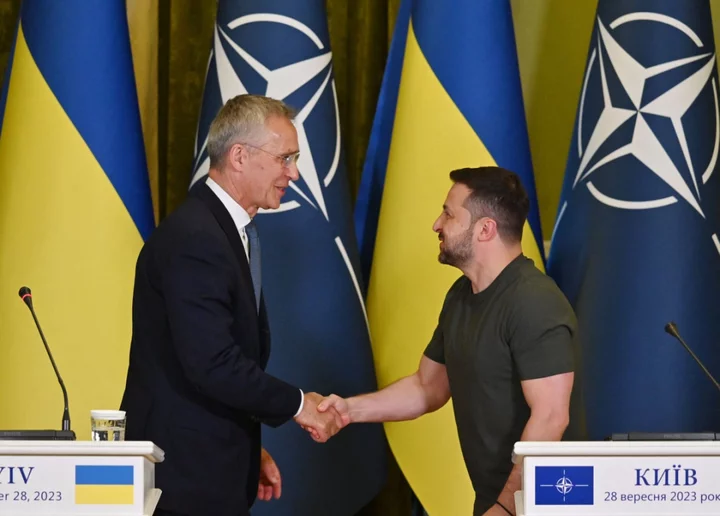
Confident of Poland continuing Ukraine military support despite strained ties, Nato chief says
Poland will find ways to address disagreements with Ukraine without the recent differences impacting its military support, said Nato’s secretary general Jens Stoltenberg. The two neighbouring nations have encountered friction in their ties after Poland – that has been one of Ukraine’s fiercest allies through the course of Russian invasion – decided to extend a ban on Ukrainian grain imports. Last week, Poland said it would only carry out previously agreed arms deliveries to Ukraine and choose to focus on rebuilding its own weapons arsenal. “I’m expecting and I’m confident that Ukraine and Poland will find a way to address those issues without that impacting in a negative way the military support to Ukraine,” Mr Stoltenberg said in an interview in Copenhagen on Friday. The announcement coincided with tensions peaking between the two neighbours after Ukraine president Volodymyr Zelensky said some countries were “feigning solidarity by indirectly supporting Russia” with a ban on grain imports. After Russia launched a full-scale invasion of Ukraine last February, a majority of Ukrainian grain ended up in Europe as the main Black Sea shipping lanes all but closed. Imports were then blocked by five countries to try and protect EU farmers amid fears the amount of grain would drive down local prices. Poland extended the ban after the European Union-brokered deal expired last week. On Tuesday, Mr Zelensky repeated his accusation on Eastern European nations backing Russia during his speech at the UN General Assembly. Poland then summoned the Ukrainian ambassador to its foreign ministry to protest Mr Zelensky’s comments. Hours later, Warsaw announced it would no longer be supplying weapons to Ukraine. “We are no longer transferring weapons to Ukraine, because we are now arming Poland with more modern weapons,” the prime minister said. Poland has previously sent 320 Soviet-era tanks and 14 MiG-29 fighter jets to the war-torn country. Mr Morawiecki also issued a warning to Kyiv, saying if they “escalate the conflict”, additional products will be added to the list of banned imports. “I am warning Ukraine’s authorities. Because if they are to escalate the conflict like that, we will add additional products to the ban on imports into Poland,” he said. “Ukrainian authorities do not understand the degree to which Poland’s farming industry has been destabilised. We are protecting Polish farmers.” Ukraine’s other ally Slovakia is also seeing discussions of halting support to Ukraine. The Nato nation has been a staunch ally of Kyiv and sent military equipment including MiG-29 fighter jets and an S-300 air defence system to its neighbour. But opposition leader and former prime minister Robert Fico has pledged to end that military support. Mr Fico is leading polls ahead of Saturday’s election. “Whatever new government they will have in Slovakia, we will continue to sit down at Nato meetings,” Mr Stoltenberg said, “and I’m confident that we’ll find ways to continue to provide support – as we have been after every election in this alliance since the war started”. Read More Plans for Poland's first nuclear power plant move ahead as US and Polish officials sign an agreement Why has Poland stopped supplying weapons to Ukraine? Zelensky accuses ‘some friends in Europe’ of playing into Russia’s hands Poland done sending arms to Ukraine, leader says, as trade dispute escalates
2023-09-30 14:59
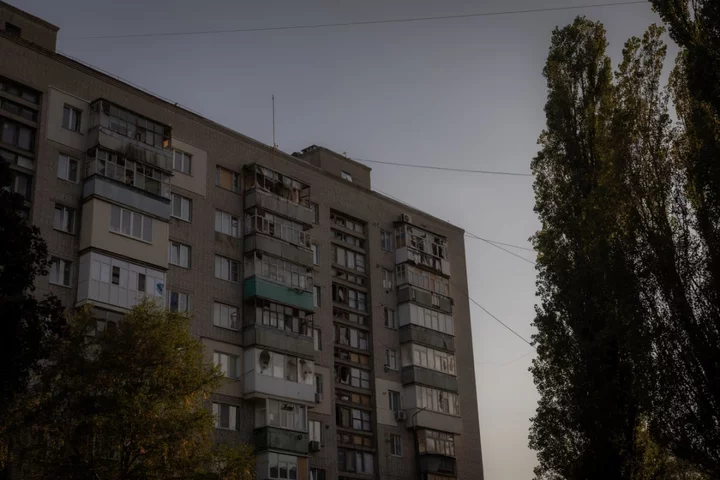
Putin launches overnight drone and missile attacks on eastern and southern Ukraine
Vladimir Putin’s forces launched overnight drone and missile attacks that targeted Ukraine’s eastern and southern parts as the war-hit country’s officials ordered the evacuation of an infrastructure site that was targeted. Ukraine’s air force said Russia’s forces launched a swarm of Shahed drones from Crimea and the Black Sea in an overnight offensive on Saturday. One of the strikes targeted an infrastructure site in the Vinnytsia region as the air force warned of the threat of ballistic missiles. Authorities asked people to stay in shelters and said a general evacuation was not yet necessary apart from the immediate area where the strike occurred. “At this time there is no need for a general evacuation, apart from the immediate area around the site of the hit,” said Vasyl Polishchuk, head of administration for the town of Kalynivka, according to the town’s website. “Attack UAVs are moving in the north-west direction. A threat to the Vinnytsia region. Stay in shelters!” it said on its official Telegram channel. The officials did not mention what target was struck and what weapon had been used. However, regional governor Serhiy Borzov said the hit was made on an unspecified infrastructure site, a term used by Ukrainian officials to refer to facilities involved in power generation and other industries. The governor announced an air raid alert at 1.10am local time and within an hour, he reported a strike. An initial air raid warning for an anticipated strike was announced at 11.17pm in western Ukraine’s Vinnytsia, Cherkasy and Kirovohrad oblasts. Ukrainian air forces issued more than 40 air raid alerts on its Telegram channels for Donetsk, Odesa, Kherson, Mykolaiv, Zaporizhzhia and Kharkiv regions among several other cities as Russian forced launched a massive wave of attacks overnight. Air-raid alerts and warnings were issued throughout the night. It warned of “the threat of using ballistic weapons in areas where the alarm has been declared”. “Don’t Ignore Airborne Alarms! Head for cover,” read another alert around 6.30am. On Friday evening, the air force of Ukraine’s armed forces said several groups of drones were fired from the Crimean peninsula. Read More Ukraine-Russia war – live: Putin orders former Wagner boss to control ‘volunteer units’ and rejoin frontline Ukraine urges other nations to boycott playing Russia after Uefa decision Russia is set to avoid a full ban from the 2024 Paralympics in Paris Putin recruits former Wagner commander ‘Grey Hair’ Troshev to oversee Ukraine mercenaries Ukraine ‘hits power substation’ in drone attacks on Russian border regions
2023-09-30 14:48

Gymnastics racism apology delay a 'real shame' - Irish PM
Leo Varadkar says there is "no place for racism in sport" after viral gymnast video controversy.
2023-09-30 01:19
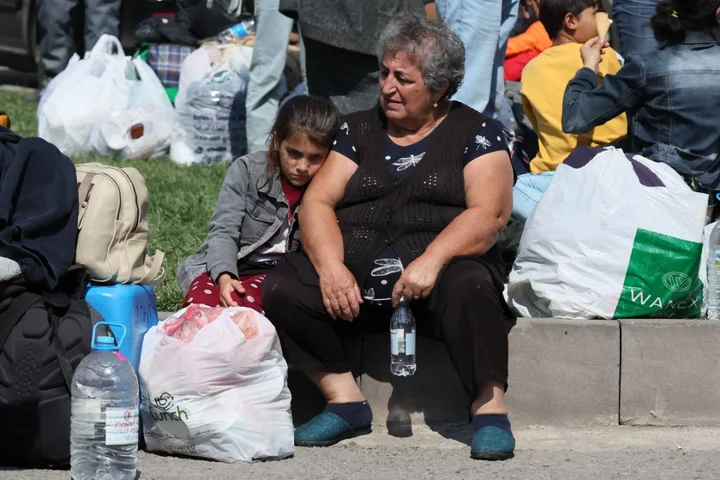
‘Centuries of history lost’: Armenians describe odyssey to safety after Nagorno-Karabakh falls
Terrified families fleeing in fear of ethnic cleansing after the collapse of Nagorno-Karabakh are running out of water and fuel during the desperate two-day odyssey to neighbouring Armenia. More than 90,000 Karabakh Armenians – around three-quarters of the total population – have now left their homes in the breakaway enclave, which is internationally recognised as being part of Azerbaijan. The United Nations fears the stunning fall of the enclave could mean there will eventually be no Armenians left in Nagorno-Karabakh, prompting concerns of ethnic cleansing. It is the largest exodus of people in the South Caucasus since the collapse of the Soviet Union. The breakaway region - also known by Armenians as Artsakh - had enjoyed de facto independence for three decades before Azerbaijan launched a lightning military operation earlier this month. It forced separatist forces to lay down their weapons and fto agree to formally dissolve the breakaway government. Fearing reprisals, as Baku’s forces moved into the main cities and arrested Armenian officials, hungry and scared families packed what few belongings they could into cars and trucks and left their homes for good. Valeri, 17, fled the village of Kichan, 70 km north of the Armenian border with his family and neighbours. In total, they squeezed 35 people into a Ford Transit and made the four-day journey to safety, sitting on top of each other and sleeping in shifts. “We couldn’t take anything with us because the shelling was too intense as we escaped,” he told The Independent. They had to hide in a large waste water pipe to escape artillery fire, he said. In the chaos, families were separated and the mobile coverage in the mountainous regions means they are still trying to reconnect. His family has been forced to move six times since the early 1990s and, like so many Armenians, find themselves homeless again. “I don’t think it’s possible to go back to Kichan, even if we could go back everything will be wrecked or stolen,” he said. Others described a 40km hairpin road to Armenia at a near standstill, with some vehicles breaking down for a lack of fuel. In the lead-up to Azerbaijan’s operation, Baku had imposed a 10-month blockade on the enclave leading to chronic shortages of food and petrol supplies. “All you can see is a sea of cars stretching to the horizon, people are cooking by the side of the road,” said Gev Iskajyan, 31, executive director of the Armenian National Committee of Artsakh, as he arrived exhausted in the Armenian capital Yerevan. He fled the region’s main city Stepanakert, or Khankendi as it is known in Azerbaijan, fearing he could be arrested if he stayed. “Resources are so scarce there, people are running out of water and fuel on the road along the way out. If anything happens to children and the elderly, no one can get to them. Ambulances can’t move,” he told The Independent. He said most families believed they would not ever be able to return home and that this was the end of Armenian presence. “It weighs heavy. Nagorno-Karabakh isn’t just a place, it is a culture, it has its own dialect,” he said. “You look at the people in the back of trucks, they have to fit their entire life in a single box, they can’t bring everything, they can’t go back, it breaks your heart. “It is centuries of history lost.” Nagorno-Karabakh isn’t just a place, it is a culture, it has its own dialect Gev Iskajyan, an Armenian advocate who fled to Yerevan The centuries-old conflict that has raged through the disputed enclave of Nagorno-Karabakh remains the longest-running in post-Soviet Eurasia. The 4,400 square kilometre territory is officially part of Azerbaijan but after a bloody war following the dissolution of the USSR in the 1990s, the region’s Armenian-majority population enjoyed state-like autonomy and status. That changed in 2020 when Azerbaijan, backed by Turkey, launched a military offensive and took back swathes of territory in a six-week conflict that killed thousands of soldiers and civilians. Russia, which supports Armenia, brokered a tense cessation of hostilities. But that was broken earlier this month when Baku launched a 24-hour blitz which proved too much for Armenian separatist forces, who are outgunned and outnumbered. They agreed to lay down their weapons and dissolve the entire enclave. Residents still left in Nagorno-Karabakh told The Independent that Azerbaijani forces and police entered the main city. “People are intensively fleeing after the forces entered, and took over the governmental buildings,” said one man who asked not to be named over concerns for his safety. Baku has also detained prominent Armenians as they attempted to flee, prompting fears more arrests may follow. Among them was Ruben Vardanyan, a billionaire investment banker, who served as the head of Karabakh’s separatist government between November 2022 and February this year. On Friday, Russian state media reported that the Azerbaijani military had also detained former separatist commander Levon Mnatsakanyan as he also tried to escape. He led the army of the self-proclaimed Republic of Artsakh from 2015 to 2018. The UN, meanwhile, said they were readying themselves for as many as 120,000 refugees to flood into Armenia, a third of them children. “The major concern for us is that many of them have been separated from their family,” said Regina De Dominicis, regional director of the UN’s child agency. “This is a situation where they’ve lived under nine months of blockade,” added Kavita Belani, UNHCR representative in Armenia. “When they come in, they’re full of anxiety, they’re scared, they’re frightened and they want answers.” Read More More than 70% of Nagorno-Karabakh's population flees as separatist government says it will dissolve The fall of an enclave in Azerbaijan stuns the Armenian diaspora, extinguishing a dream AP PHOTOS: Tens of thousands of Armenians flee in mass exodus from breakaway region of Azerbaijan More than 70% of Nagorno-Karabakh's population flees as separatist government says it will dissolve The fall of an enclave in Azerbaijan stuns the Armenian diaspora, extinguishing a dream Why this week's mass exodus from embattled Nagorno-Karabakh reflects decades of animosity
2023-09-30 00:46
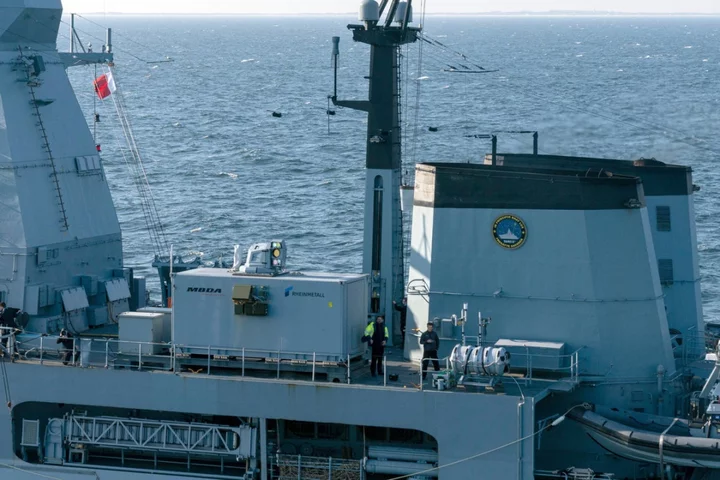
German Navy fleet may soon be armed with combat-ready lasers
The German Navy fleet may soon be armed with combat-ready lasers. A laser weapon demonstrator (LWD) has successfully been trialled for a year onboard the Frigate Sachsen with assistance from he British Navy. The LWD has performed more than a hundred test firings under realistic operating conditions against different target types. The weapon fires a high-energy laser beam that can destroy drones, drone swarms, speedboats and possibly missiles at close to very close range. Arms manufacturer Rheinmetall AG says it could undergo a performance upgrade for destroying supersonic missiles, rockets, and mortar and artillery rounds. The company explained this month that the trial “proved that a laser is capable of successfully engaging targets in a maritime environment.” During the trials, with an overall six campaigns lasting nearly a year, the combat effectiveness was proven in increasingly complex scenarios against targets. This included all aspects from detection and tracking - including highly agile targets; the interplay of sensors, command and weapon engagement systems and effectors; possible rules of engagement; and the successful engagement of targets with a laser beam. Rheinmetall AG say the system would complement gun-based systems and guided missiles. At the end of the trials, the LWD’s capabilities were successfully demonstrated at two VIP days, which included shooting down a drone, in front of high-ranking representatives of the Federal Office for Bundeswehr Equipment, Information Technology and In-Service Support (BAAINBw), the Germany Navy and Army, as well as the Bundeswehr Office for Defence Planning (PlgABw). Representatives of the British, Netherlands and Norwegian Navy participated during the demonstration, say Rheinmetall AG. Responsibility for development and construction of the laser system, as well as the support during the trials that have been planned and organised by BAAINBw, is the High-Energy Laser Naval Demonstrator Working Group, or ARGE, consisting of MBDA Deutschland GmbH and Rheinmetall. The demonstrator is currently undergoing detailed examination, after which it will be transferred to Bundeswehr Technical Centre 91 in Meppen: the German army technology centre responsible for weapons and ammunition. “The test results and subsequent analysis will be used for minimising risks in a possible next phase, i.e., the development of an operational laser weapon system,” Rheinmetall AG add. Read More Ukraine-Russia war – live: Putin orders former Wagner boss to control ‘volunteer units’ and rejoin frontline Putin orders former Wagner commander to take charge of 'volunteer units' in Ukraine Australian defense minister says army will stop flying European-designed Taipan helicopters Families of Troubles victims launch legal challenges to Legacy Bill Armenians describe odyssey to safety after Nagorno-Karabakh falls Billionaire Louis Vuitton owner and Russian oligarch in money-laundering probe
2023-09-29 23:59
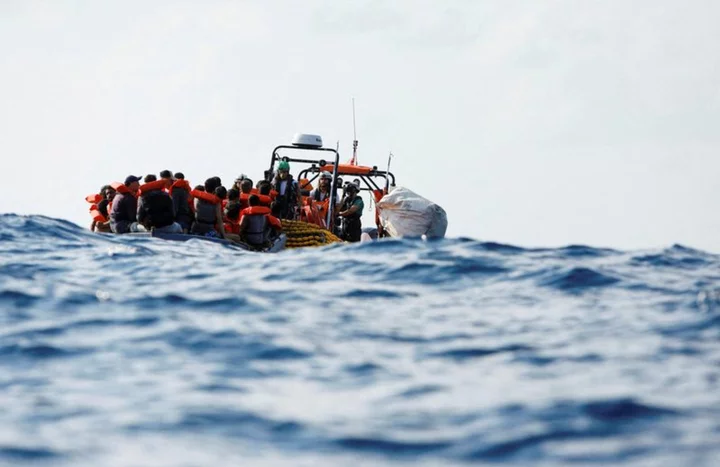
Italy says migrants must go to charity boats' home nations
By Crispian Balmer ROME Migrants picked up at sea by rescue ships must be sent to the countries
2023-09-29 23:50
